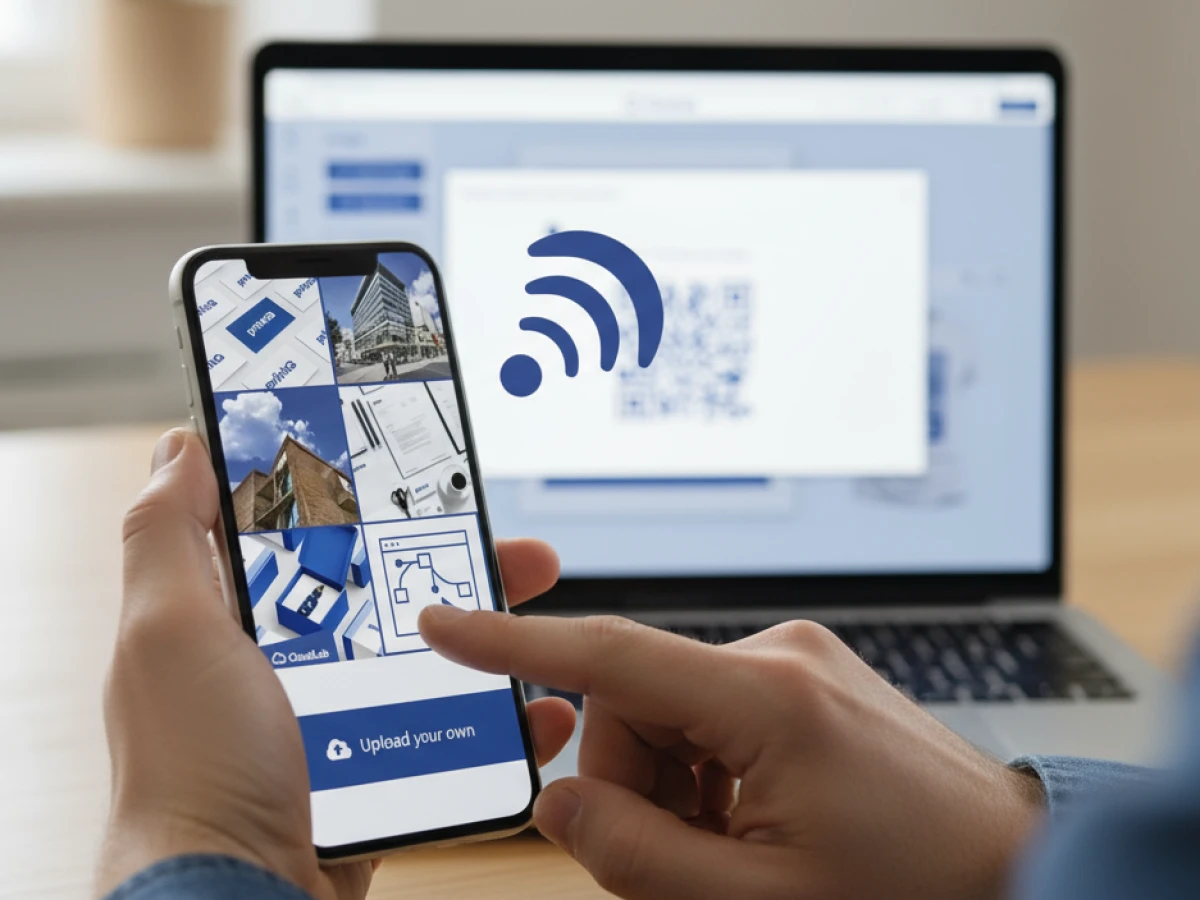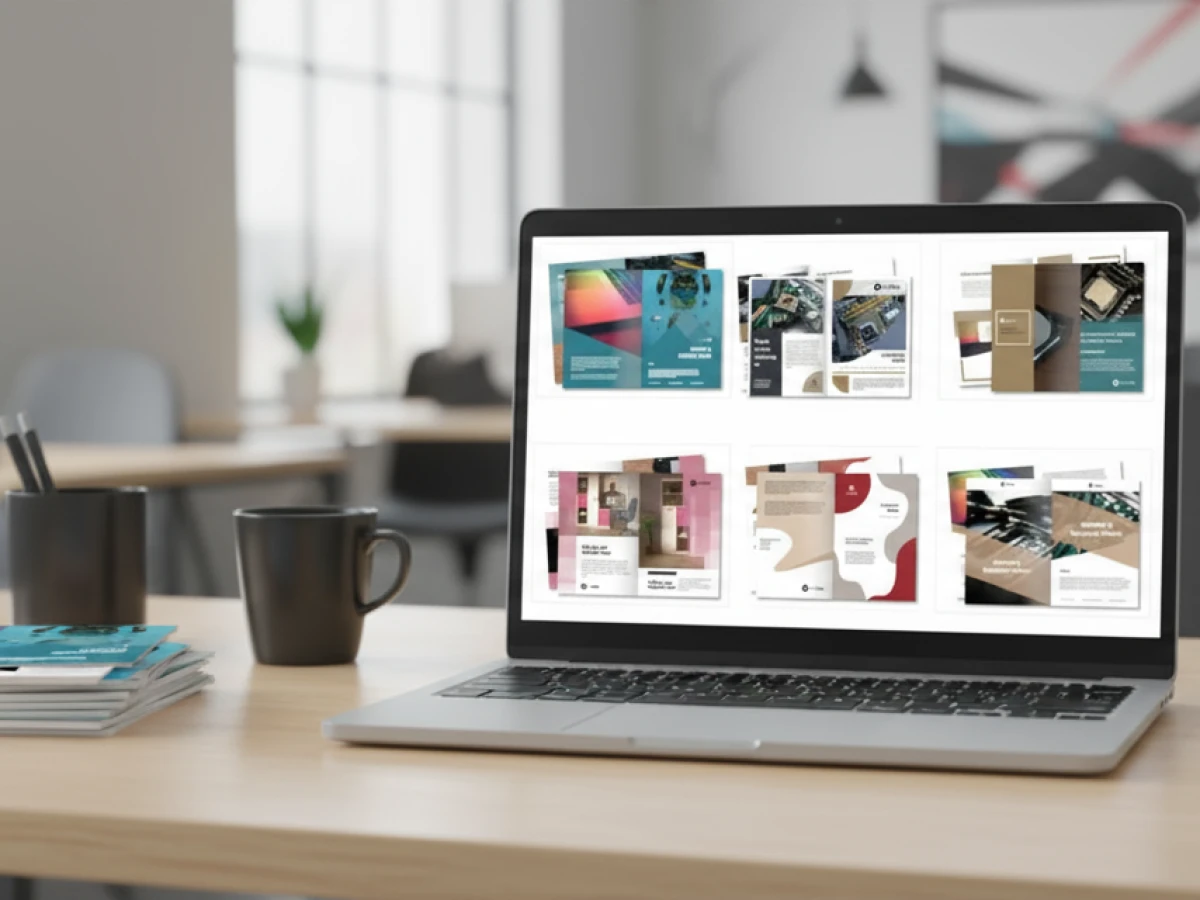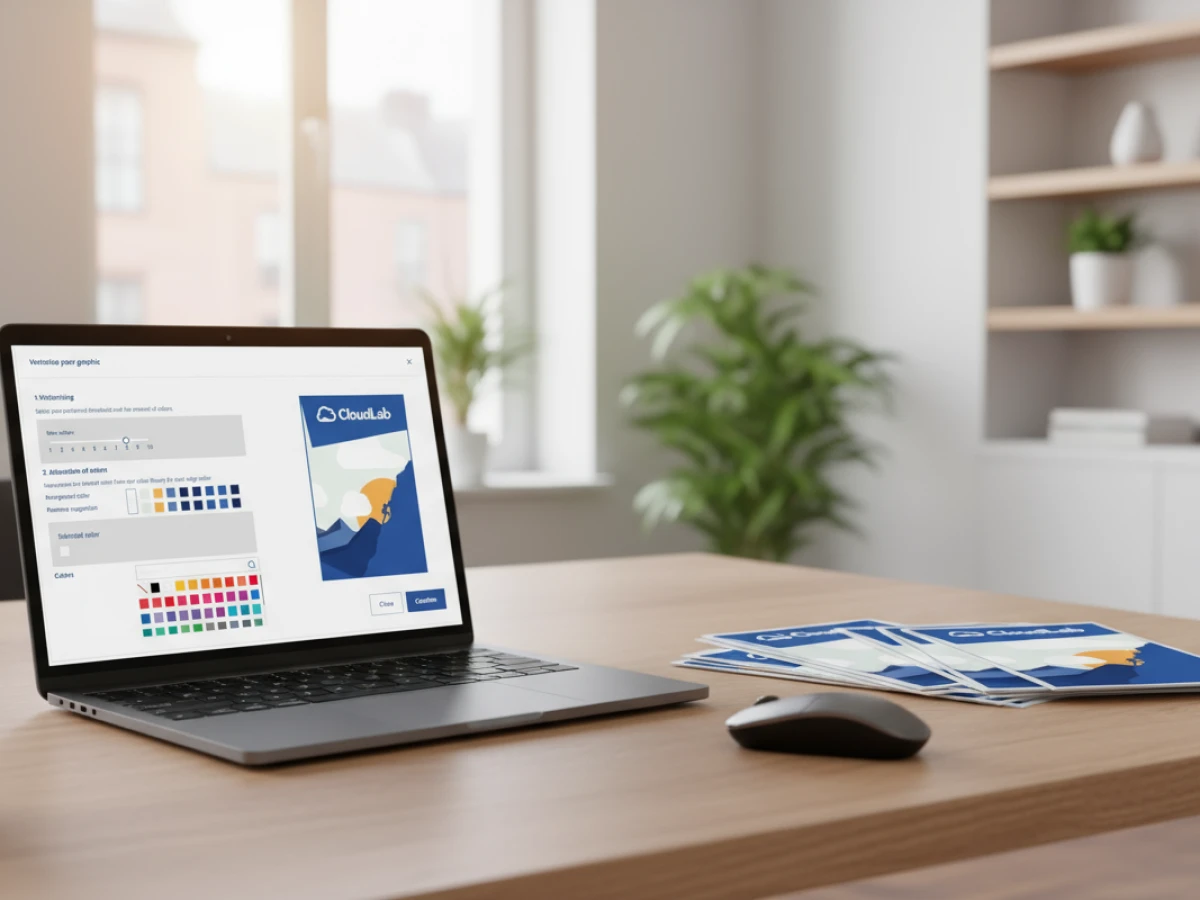Editorial Designer – Smart Multi-Page Publishing in Your Browser
.webp)
printQ’s Editorial Designer brings professional publishing to the browser. Create multi-page layouts — magazines, brochures, and catalogs — without desktop software. With automation, real-time collaboration, and print-ready output, this Web-to-Print tool bridges content creation and production in one seamless workflow.
Editorial Designer in printQ – Professional Publishing, Simplified
The world of print publishing has evolved. What once required desktop software, complex file exchanges, and manual reviews can now be done entirely online.
With printQ’s Editorial Designer, CloudLab has transformed traditional layout design into a Web-to-Print experience — enabling teams to create, edit, and approve multi-page documents such as catalogs, magazines, and brochures directly in their browsers.
No InDesign, no QuarkXPress, no installation. Just powerful, professional publishing in the cloud.
What Is the Editorial Designer?
The Editorial Designer is printQ’s advanced browser-based layout editor for multi-page documents.
It supports all the functions you’d expect from professional DTP software — but with the accessibility and automation of a Web-to-Print system.
It’s ideal for:
- Magazines and editorial publications
- Product catalogs and corporate brochures
- Annual reports, guides, and booklets
- Franchise marketing materials
In essence, it’s a browser-native publishing suite that allows creative teams and enterprises to build complete publications collaboratively, efficiently, and with full print accuracy.
Key Features of the printQ Editorial Designer
1. Multi-Page Layout Management
The Editorial Designer provides full support for complex, multi-page structures.
- Create unlimited pages per document.
- Manage master pages for recurring design elements.
- Use text linking (threaded frames) to flow content automatically between pages.
- Set up multi-column grids, headers, and footers.
- Reorganize pages easily through a visual thumbnail overview.
This enables designers and content creators to build editorial-quality layouts — directly in the browser, without traditional DTP tools.
2. Professional Typography and Styling
Typography is at the heart of editorial design, and printQ delivers precision control:
- Paragraph and character styles for consistent formatting.
- Full OpenType support for ligatures, kerning, and advanced typographic features.
- Hyphenation, justification, and alignment controls.
- Adjustable tracking, leading, and indents.
- Style libraries that maintain brand consistency across documents.
Whether designing a product catalog or a lifestyle magazine, users achieve professional typographic results that match print standards — not simplified “web” layouts.
3. Integrated Image and Media Management
High-quality publishing requires efficient media handling.
The Editorial Designer connects seamlessly to printQ’s integrated asset management system — or to external DAM (Digital Asset Management) and PIM (Product Information Management) platforms via API.
- Upload or select images directly within the editor.
- Use placeholders for unassigned images.
- Automatically scale and crop photos to fit frames.
- Manage CMYK, RGB, and spot color images simultaneously.
Even Mobile Image Upload is supported, letting contributors capture and insert images directly from smartphones.

4. Automated Data-Driven Publishing
The true power of printQ lies in automation.
With Variable Data Printing (VDP) and data integration, the Editorial Designer transforms static layouts into dynamic, data-driven publications.
- Import product or article data from CSV, XML, or API sources.
- Auto-fill tables, text blocks, and image placeholders.
- Generate entire catalogs or price lists automatically from live data.
- Apply pagination rules to balance content across pages.
This functionality enables mass customization — producing hundreds of personalized brochures, catalogs, or event guides in minutes.
5. Collaboration and Workflow
printQ’s Editorial Designer supports real-time collaboration, ideal for teams working across locations.
- Multiple users can edit or comment simultaneously.
- Role-based permissions (author, editor, designer, approver) control access.
- In-document commenting streamlines review cycles.
- Version control ensures every change is tracked.
This eliminates the endless back-and-forth of file versions and email approvals — bringing modern editorial workflows into a single online environment.
6. Automated Preflight and Print-Ready Output
Once a publication is ready, printQ’s automation engine takes over.
- Automatic Preflight checks all pages for resolution, fonts, colors, and overprints.
- Errors are flagged instantly or corrected automatically.
- Output is generated as PDF/X-4 — complete with trim marks, bleeds, and CMYK profiles.
Because the system integrates directly with printQ’s production automation, the final file can move straight into the print workflow — no additional prepress required.
.webp)
7. Interactive Preview and Approval
printQ includes interactive preview modes, allowing teams to view their publication before print.
- Flipbook-style magazine view for browsing.
- Full-page preview with overprint simulation.
- Automated approval workflow with notifications.
This “what-you-see-is-what-you-print” approach reduces miscommunication, speeds up approval, and builds trust with clients or internal stakeholders.
Why Web-to-Print Publishing Matters
Traditional publishing workflows rely on desktop software, local files, and manual updates — all of which slow down time-to-market.
In a connected world, marketing teams need faster, automated, collaborative publishing that can scale across regions, languages, and formats.
The Editorial Designer brings that transformation to life, offering a future-ready publishing solution that merges design precision, data automation, and production efficiency.
Real-World Applications
1. Corporate Catalogs and Product Brochures
Manufacturers and retailers can automatically generate product catalogs directly from their database.
Text, images, and prices update dynamically — ensuring accuracy and eliminating layout bottlenecks.
2. Magazines and Editorial Publications
Editorial teams can create full magazines online.
Writers input text, designers adjust layout, and editors approve — all within the same interface.
No installation, no file transfers — just collaborative digital publishing, ready for print.
3. Annual Reports and Company Publications
Enterprises use the Editorial Designer to create corporate reports with financial tables, charts, and data-driven visuals.
Integration with external data sources ensures every figure is up-to-date and compliant.
4. Franchise and Retail Networks
Franchise systems and marketing departments can manage localized publications with centralized design control.
Stores or branches customize approved templates with regional data while corporate maintains CI compliance.
5. Government and Education
Public institutions, universities, and organizations use the Editorial Designer to create handbooks, guides, and brochures efficiently — with transparent review workflows and centralized publishing control.
Technical Foundation
Built on Adobe Magento
As part of the printQ ecosystem, the Editorial Designer runs on Adobe Magento (Adobe Commerce) — giving it all the benefits of enterprise-grade eCommerce:
- User accounts and permissions
- Order management and history
- Multi-language, multi-currency, and tax logic
- Analytics and reporting
This integration allows the Editorial Designer to function both as a creative tool and a scalable business platform.
API-First Architecture
printQ’s headless API architecture connects with any external system:
- DAM and PIM for content and assets
- ERP or MIS for production data
- CRM or CMS for publishing automation
This ensures a seamless connection between content creation and print production, no matter how complex the workflow.
Workflow and Production Integration
Once approved, publications move directly into production.
printQ automatically converts layouts to print-ready PDFs, triggers order fulfillment, and communicates with external print systems through JDF/XML interfaces.
This end-to-end workflow reduces manual touchpoints and guarantees consistent quality.
Hosting and Security
printQ offers SaaS and On-Premise deployment options.
This gives organizations full control over data and compliance — essential for publishers or corporate clients handling sensitive content.
All transfers are encrypted, and user permissions ensure secure collaboration across departments or locations.
Business Impact – From Bottleneck to Breakthrough
Faster Time-to-Market
Automated workflows and simultaneous collaboration cut production time dramatically.
Reduced Costs
No DTP licenses, no manual layout adjustments — only streamlined, automated processes.
Consistent Quality
Central templates and Preflight ensure every document meets brand and print standards.
Increased Efficiency
Multiple projects can run in parallel, with each stage automated from input to approval.
Sustainable Publishing
Digital workflows reduce printing errors, paper waste, and redundant file exports.
Future Outlook – AI and the Next Generation of Web Publishing
CloudLab continues to enhance printQ’s Editorial Designer with intelligent, next-generation features:
- AI-assisted layout optimization: Smart placement of images and text based on visual hierarchy.
- Automated translation and localization: Multi-language content generation.
- Predictive content flow: Adaptive templates that expand or contract based on content volume.
- Integration with cloud-based authoring tools: Sync with popular content systems for hybrid publishing.
These innovations will make editorial publishing not only faster but also more intelligent and adaptive to modern communication needs.
.webp)
Integration with Other printQ Features
The Editorial Designer connects with all major printQ modules:
- Variable Data Printing (VDP): Dynamic data for personalized publications.
- Template Gallery: Reusable, CI-compliant layouts.
- Mobile Image Upload: Seamless media contribution from smartphones.
- Preflight & Workflow Automation: Ensures output consistency.
- B2B & B2C Storefronts: Enables publishers and companies to sell or distribute content online.
Together, they form a unified ecosystem for every type of print product — from packaging to magazines.
The Future of Publishing Is in the Browser
With printQ’s Editorial Designer, professional publishing finally meets modern simplicity.
It brings together design precision, automation, and real-time collaboration — making it possible to create complex, multi-page documents entirely online.
No local software, no version chaos, no bottlenecks. Just efficient, scalable publishing that fits today’s fast-paced digital world.
printQ redefines editorial design — turning creativity, structure, and automation into one seamless Web-to-Print experience.





